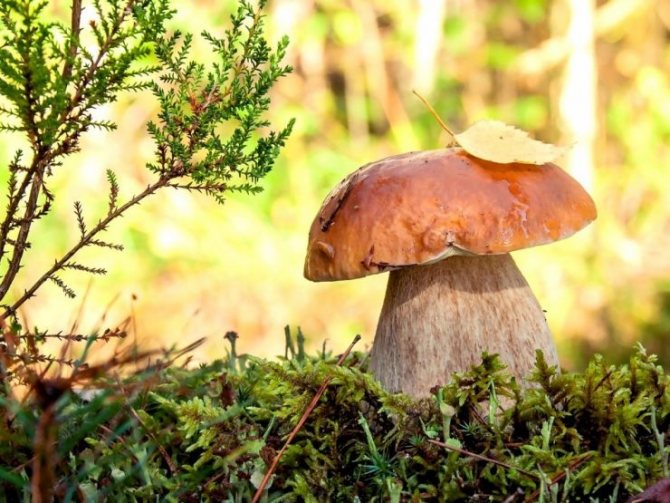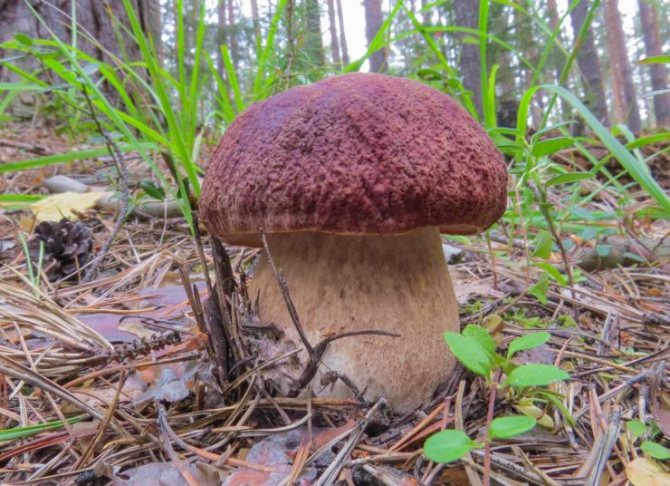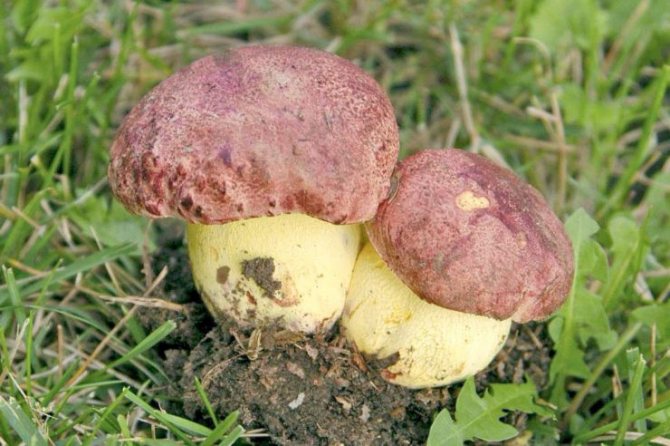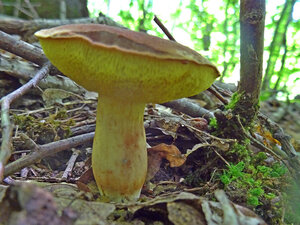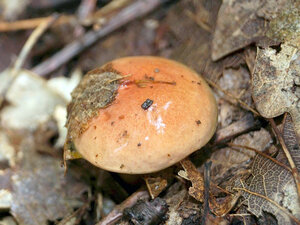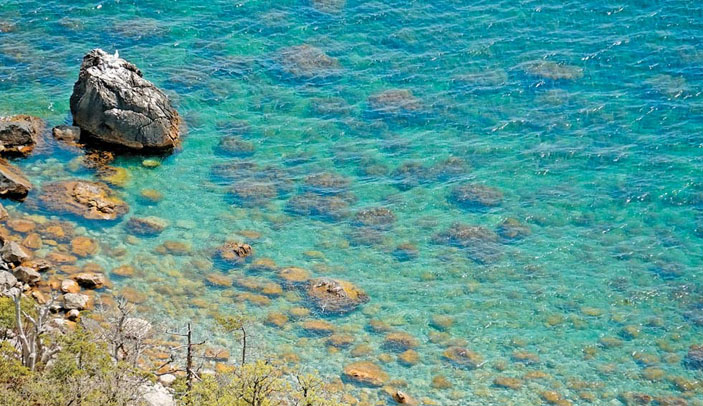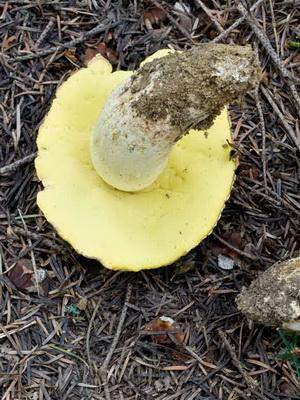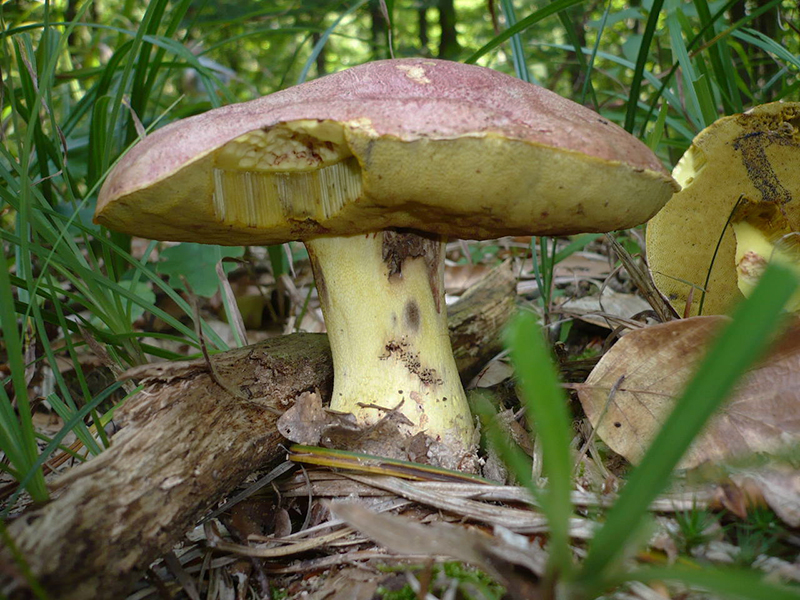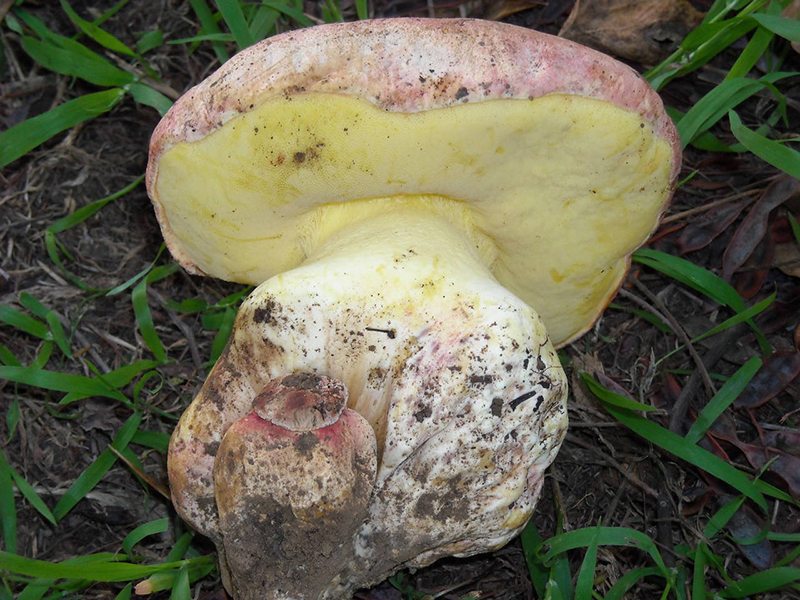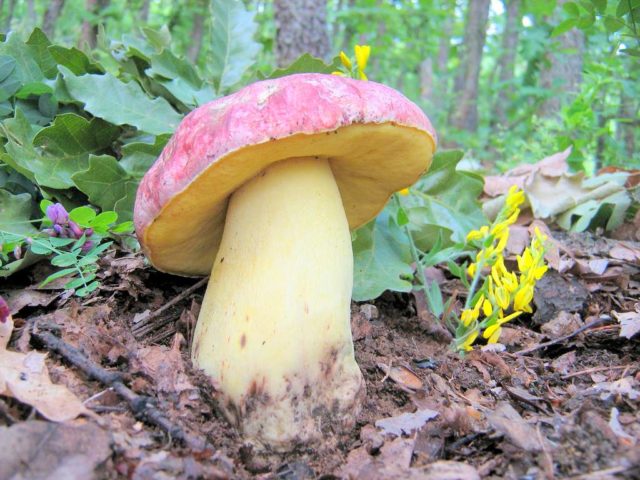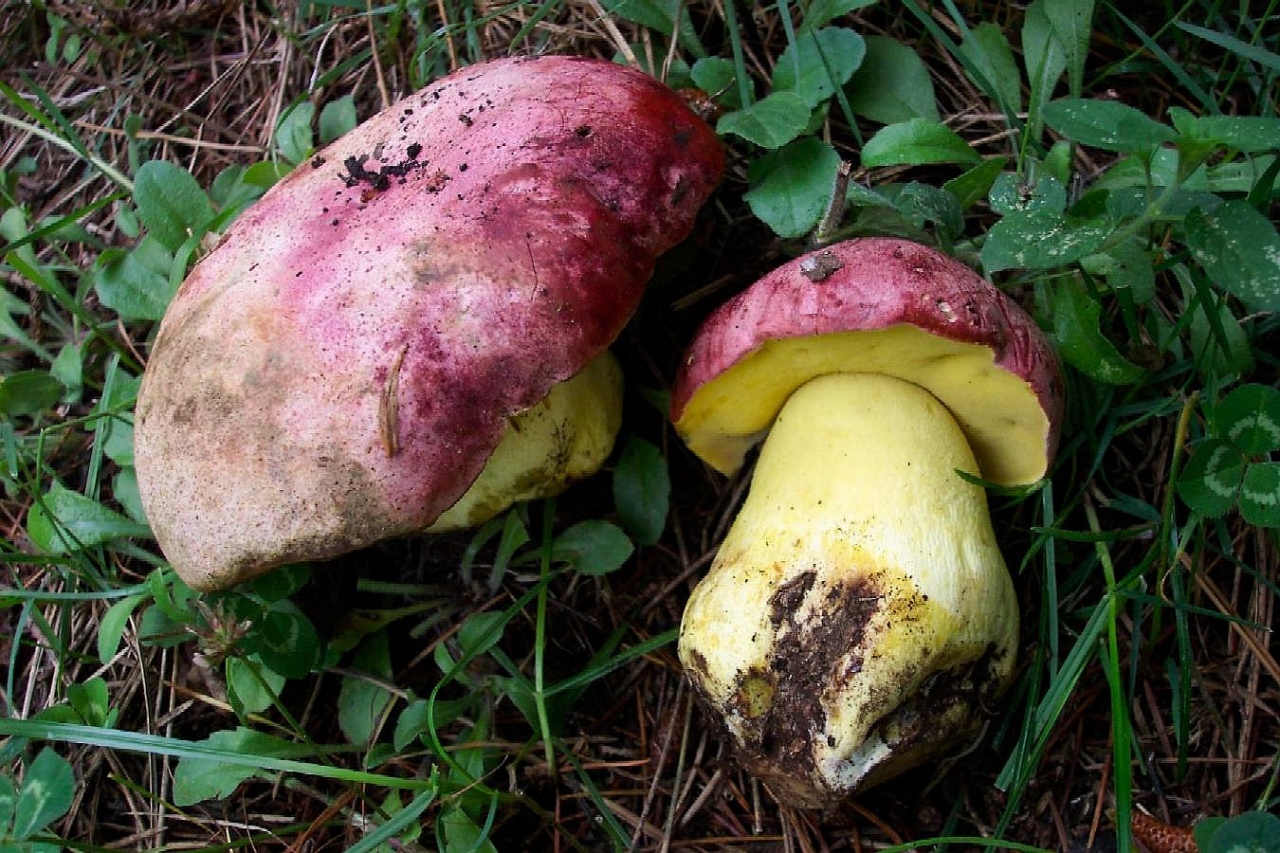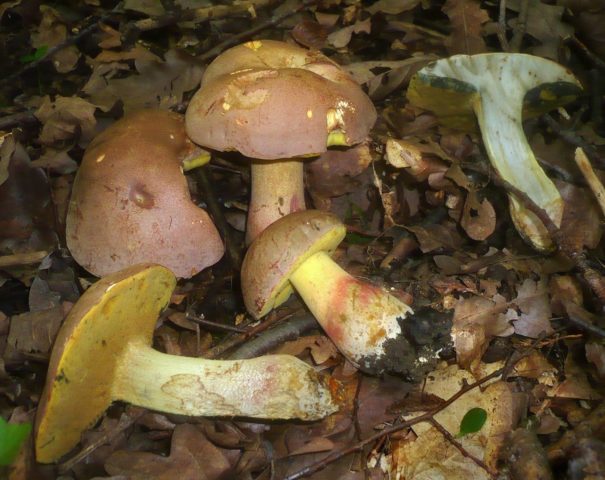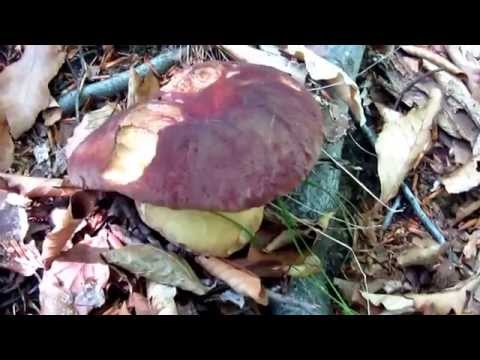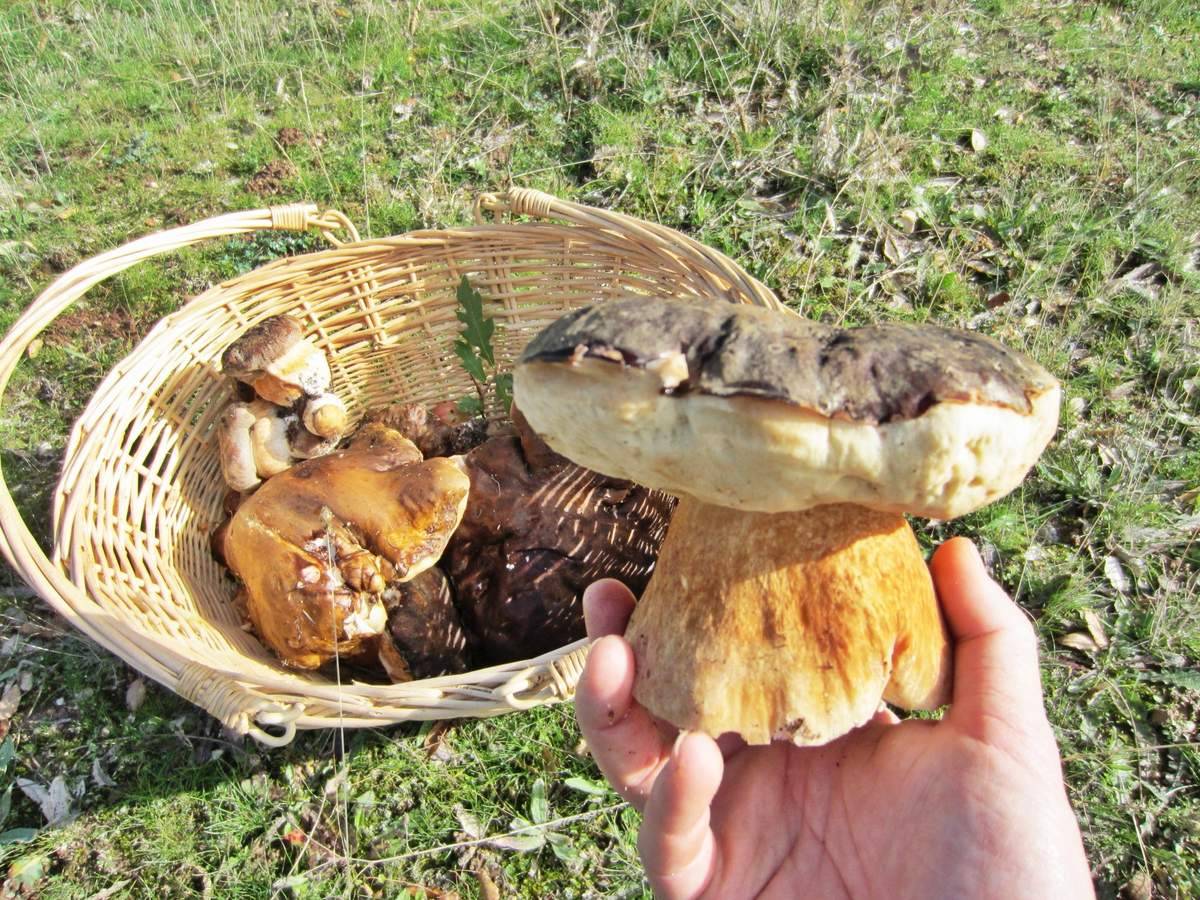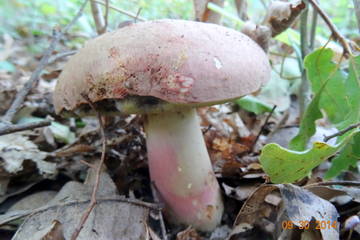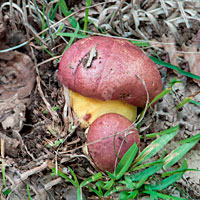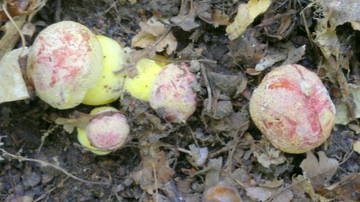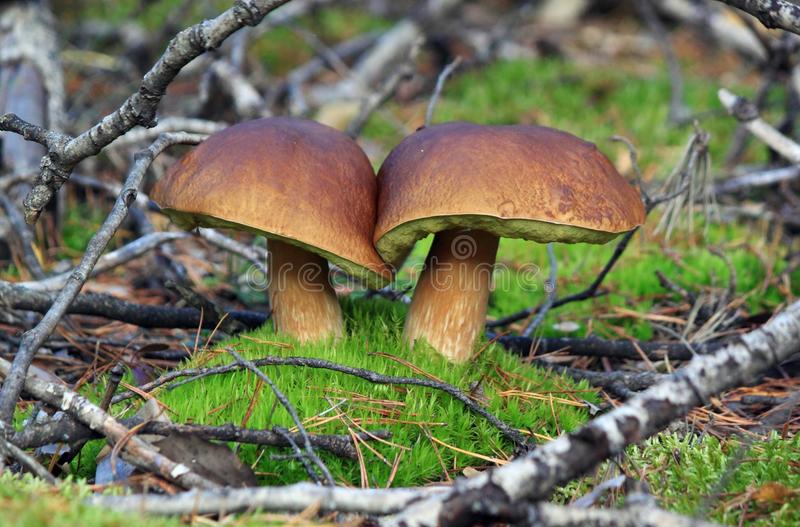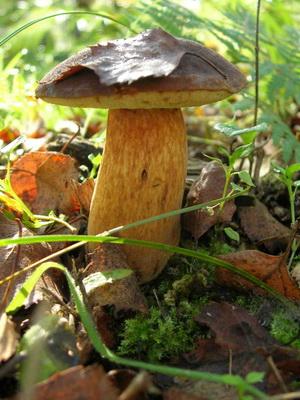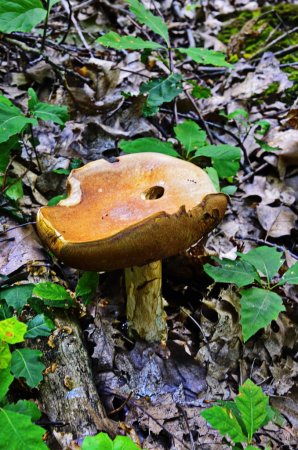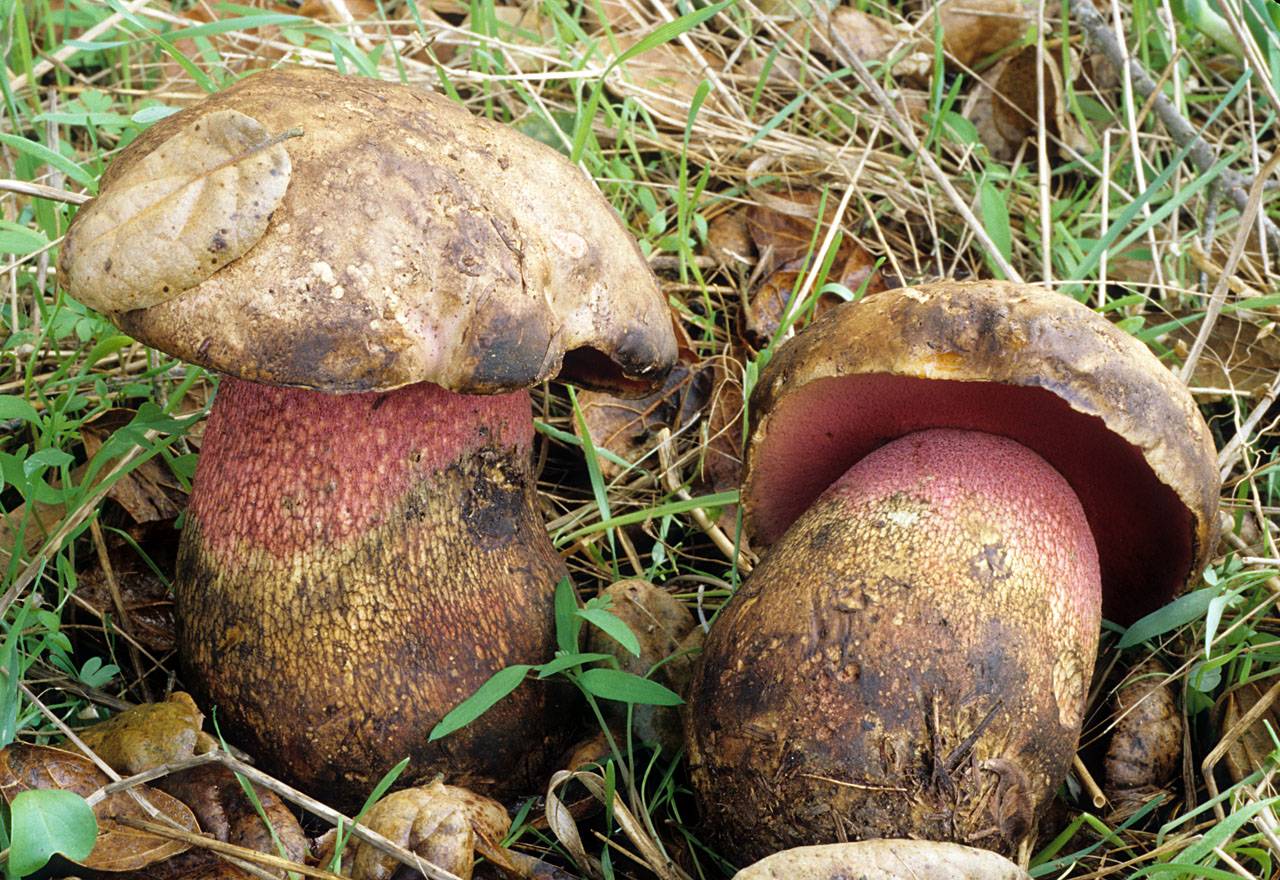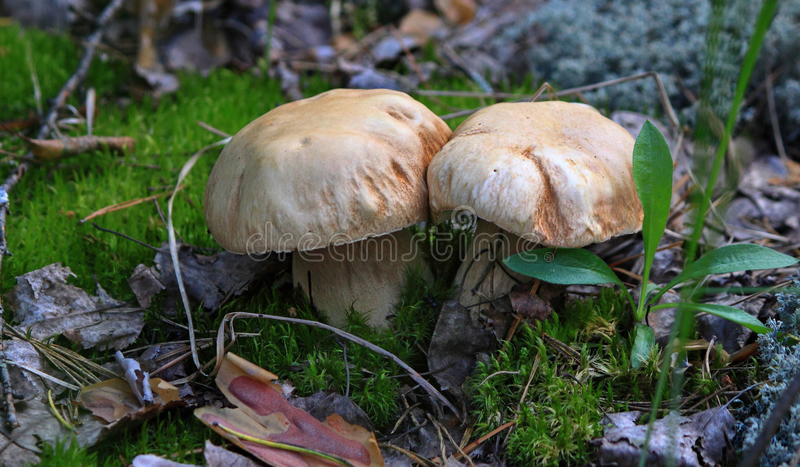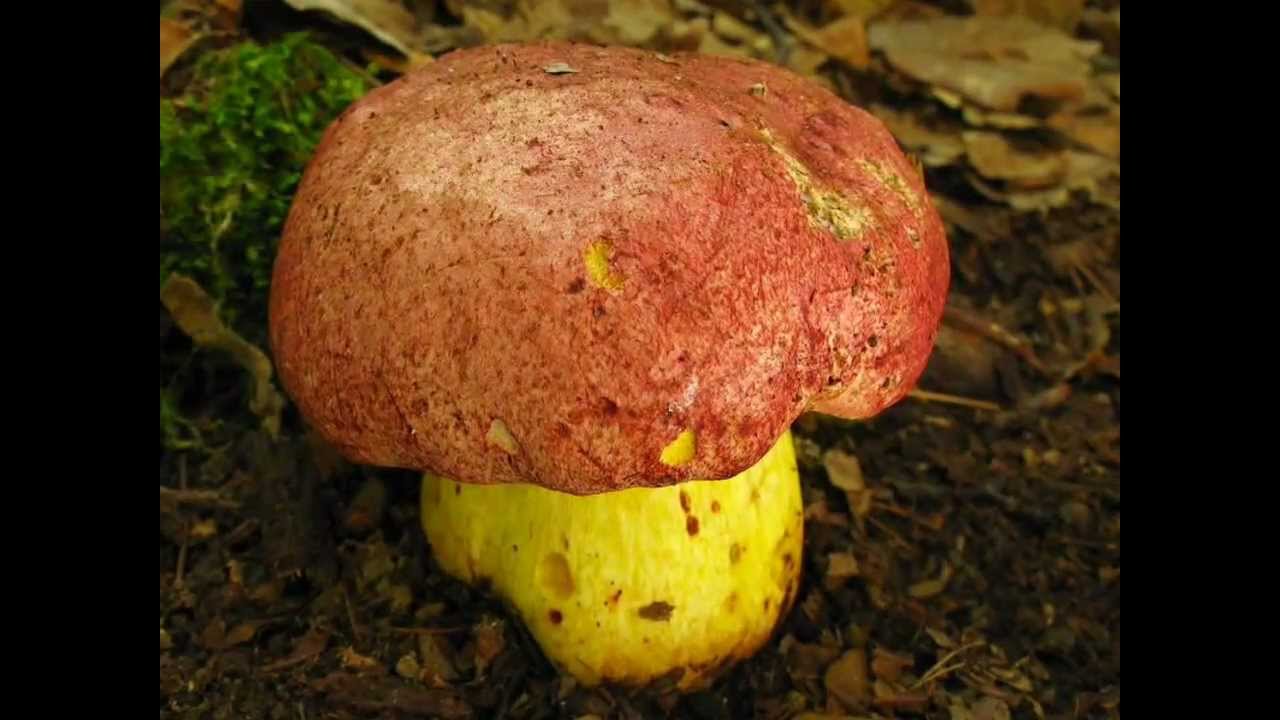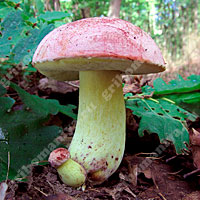Option number 2
Another option is to take a rather mature bronze boletus and soak it in a bucket of water. Some recommend adding a bag of yeast to the water. After a day, knead the hat with your hands. Strain the mixture. Throw away the thick, and pour the liquid, in which there are a lot of fungal spores, under the tree - a potential symbiont. If there are several such trees, if you wish, you can water it, that's all, a dispute in one hat is enough for 4 two hundred liter barrels of seed solution. If the weather is dry, water the planting site once a week.
Sowing Bronze Boboroviks in open ground does not give a 100% guarantee of the result, although if the technology is followed, the probability of getting a mushroom plantation is quite high. However, there is a way to breed boletus indoors. This is a much more labor-intensive and capital-intensive task, but success is more likely in this case.
To grow Bronze Bolets, you will need two clean, dry rooms, in which you need to carry out anti-mold treatment, then thoroughly ventilate and dry. It is necessary to think over and install ventilation, irrigation, heating systems, as well as fluorescent lamps.
The first room will be needed to germinate the spores. It should be darkened, the humidity in it should be at least 95%, and the temperature should be 23-25 ° C.
For the ripening of fruit bodies, ventilation is needed for a good supply of oxygen, a lower temperature (12-18 ° C) and daylight for at least 3-4 hours a day (lamps are also suitable). Excessive moisture will harm here, one or several, depending on the size of the room, water containers will be enough.
It is worth choosing planting material based on recommendations and reviews. Check mycelium before paying: healthy mycelium is orange-yellowish. It should not have a trace of ammonia smell, such mycelium was overheated during storage and now it is not viable.
Sowing substrate is made from any plant waste and forest litter is added to it. There should be no mold or rot anywhere! All this must be mixed, crushed and steamed for 3 hours with water, the temperature of which is maintained at 70-80 ° C. Then the excess water is drained, the mass is allowed to cool to room temperature. Take a handful of substrate. It should be easy to squeeze without emitting excess water. If it is, then you need to let it drain for up to several days.
Sow the substrate with mycelium in a sterile, sealed (ventilation off, doors and windows closed) room, wearing sterile gloves, strictly following the instructions on the package. The mycelium is crushed right in the package, it is opened only later. Mycelium is added to the substrate in a ratio of 3-5: 100, if it is produced in Russia, and 1.5-2.5: 100, if in Europe. Everything is mixed and packaged in polypropylene bags or planting boxes. In the bags, using a sterile scalpel blade, make cruciform incisions about 1 cm long. It remains to lay the bags on the shelves in the germination room so that the distance between them is at least 5 cm.
After a month, the bags are transferred to a germination room. The usual resource of such a landing is up to six months. This allows you to timely lay fresh mycelium for germination.
Royal boletus (Butyriboletus regius)
Synonyms:
Boletus regius
Borovik royal (lat.Butyriboletus regius) is a mushroom of the genus Butyriboletus of the Boletaceae family. Previously, this species was attributed to the genus Borovik (Boletus).
Description
The cap of this mushroom is bright pink, violet-red or rosy-red in color, but with age, the color usually fades. The skin is delicately fibrous, smooth, but sometimes whitish mesh cracks appear on it. The cap of young mushrooms is convex, and then it becomes cushion-shaped and in old mushrooms it can be completely flat, opening to a prostrate shape with a dent in the center.The size of the cap is from 6 to 15 cm in diameter. The flesh is yellow, blue on the cut, has a dense structure and a pleasant mushroom taste and smell. The leg is up to 15 cm in height and up to 6 cm in thickness, yellowish-brown, thickened in shape. The upper part of the pedicle has a thin yellow reticular pattern. The hymenophore is tubular and free, there is a deep notch near the pedicle. The color of the tubular layer is greenish or yellowish. Tubules up to 2.5 cm long with rounded pores. Spores are smooth, fusiform, 15x5 microns. The spore powder has a brown-olive color.
Spreading
Boletus is found mainly in beech and other deciduous forests. In Russia, it is common in the Caucasus, and also rarely found in the Far East. This mushroom prefers sandy and calcareous soils. This mushroom can be harvested from June to September.
Food quality Good edible boletus, which tastes very much like rooted boletus. Boletus royal has a fragrant and dense pulp, which is very highly valued. This mushroom can be consumed both freshly prepared and canned.
Similar species Externally, the boletus royal resembles a related species - the beautiful boletus (Boletus speciosus), which has a red leg and blue flesh.
Mushroom photo Boletus royal from questions in recognition:
Do you think that fly agarics are poisonous mushrooms, unsuitable for food? It turns out that there is an exception - the edible royal mushroom, the photo and description of which you will see below. This mushroom has been known since the time of Julius Caesar. Therefore, it has other names: Caesar fly agaric, Caesar mushroom.
Interesting Facts
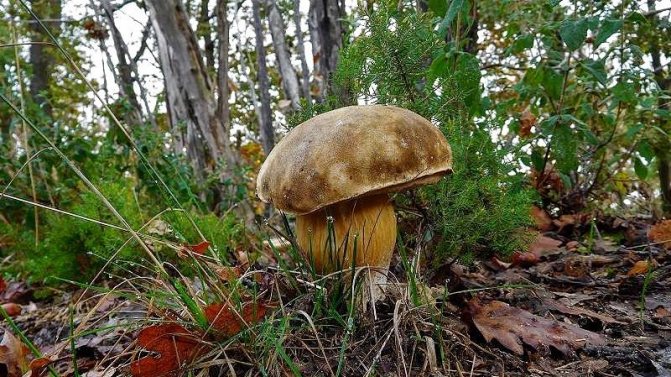
Bronze boletus is a rather rare species. For this reason, this mushroom was included in the Red Data Books of a number of countries (some Scandinavian, such as Denmark and Norway). It is also considered an endangered species in Montenegro.
To find a bronze boletus, due to its rarity and excellent taste characteristics, is a real success. In the forests of central Russia, it practically does not occur, preferring warmer places.
Even with such a high assessment of the qualities, bronze is ill cannot be consumed by young children and patients with gastritis, since the mushrooms are rather difficult to digest and, therefore, can cause gastrointestinal disorders.
Growing methods
The main characteristic feature of eringa is its resistance to viruses and bacterial lesions. In addition, this species tolerates storage and transportation well, while it does not lose its taste and appearance at all.
It is very important that the cultivation technology is very simple and is much cheaper than, for example, the cultivation of mushrooms. For self-cultivation, it is necessary to prepare the substrate
Most often, a log or a deciduous tree stump is chosen. Better if it is birch, aspen or alder. You will also need a drill and packing mycelium. First, you need to inspect the selected tree for damage by rot or other fungi. The thickness of the log should not exceed 30 cm, and its length can be 35-50 cm.
Under natural conditions, the cultivation of eringa on wood should be started at the end of April-May, when stable warm weather is established. Indoors, these mushrooms can be grown all year round, provided they are heated during the cold season. The optimum temperature is between 10 and 27 degrees.

Before planting, the prepared wood must be soaked for several days so that the tree is thoroughly saturated with moisture. Then the tree is taken out and, for several hours, excess liquid is allowed to drain. There is no need to leave it for a longer period or put it out in the sun, it can dry out. In the prepared substrate, a drill makes several holes with a depth of 4 to 10 cm and a diameter of no more than 1 cm. In order not to introduce mold or bacteria into the mycelium, wash your hands thoroughly and wear gloves. Then the mycelium is neatly placed in all the pre-drilled holes
Further, they are carefully plugged with wax or covered with wooden corks.
To speed up the germination process, the wood is covered with a bag or coarse cloth. The prepared log with mycelium is removed to a dark, well-ventilated place. The moisture content of the substrate must be maintained at a high level. When grown in natural conditions, it is necessary to moisten not only the wood, but also the earth around it. With the right actions, the substrate will soon be covered with white mycelium. And in about 3-5 months the first harvest of mushrooms will appear.
- In the absence of space or the impossibility of using logs, there is an opportunity to grow royal oyster mushrooms in your garden or at home. Any room is suitable for this: a garage, a barn, a cellar or a basement. Any containers can be used as a substrate: plastic bottles, cans, boxes and even plastic bags. It is only necessary to carefully and correctly sow the mycelium and observe some conditions:
- The temperature should be between + 16 ° C and + 27 ° C.
- Air humidity not lower than 90%.
- When fruiting begins, you should take care of the lighting.
Further, special care will not be needed, since these representatives of the mushroom kingdom are completely unpretentious.
Description
The inedible boletus has a characteristic color: the hat is, as it were, sprinkled with ashes. And at the same time, the mushroom has a beautiful and remarkable leg: a bright burgundy color.
Hat
The mushroom is the owner of an inconspicuous hat. But the color scheme is different, depending on the age and place of growth:
- gray;
- olive gray;
- brown;
- ashen;
- gray-brown.
A young mushroom has a semicircular cap. But over time it changes, becomes convex. The diameter of the cap reaches from 4 to 15 cm.The surface is absolutely smooth, but wrinkled specimens are also found. The young Bolet's handsome-footed hat is dull, dry, waviness is present. After a while, she becomes naked, a clear curled edge appears.
Pulp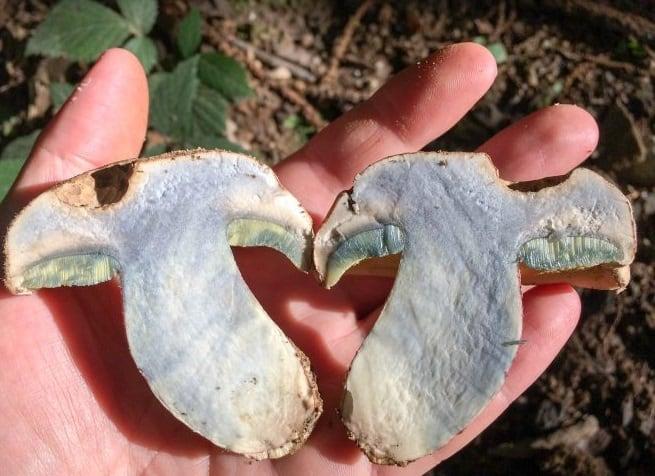
Boletus boletus has a firm, tough pulp. When cut, the mushroom picker observes a light color, sometimes with a yellowish tinge. After cutting, the flesh of the cap and leg quickly turns blue.
In foreign sources, you can find information that inedible boletus is toxic and can cause serious poisoning. But in reality this is not the case. After cooking the mushroom for food, the pulp immediately has a pleasant sweetish taste. But gradually the taste changes dramatically and the mushroom becomes unbearably bitter.
Leg
The leg of the inedible boletus changes with age. Initially, it has a barrel-shaped stem. But as it grows, it takes on a club-shaped or cylindrical shape. Mushroom pickers note that there are specimens with sharp ends.
The length of the leg does not exceed 15 cm. But you can find an adult mushroom with a length not exceeding 3 cm.
The leg of the Inedible Boletus is permeated with a white mesh, and near the cap the color is yellow. Closer to the root, it is white. In the middle, the shade is deep red. Mushroom pickers note that as it grows, the burgundy tone may disappear.
The hymenophore or tubular layer of the boletus boletus is initially bright yellow in color. As it grows, the color changes to light yellow.
Time and place of fruiting
The boletus boletus bears fruit from late July to mid-October in coniferous, oak and deciduous forests, in mountainous areas under spruce trees. Mainly in the southern regions of Russia.
Useful properties of boletus
Forest boletus is a natural and widely available storehouse of essential vitamins and many beneficial properties. The composition of the mushroom pulp is presented:
- thiamine;
- riboflavin;
- pantothenic acid;
- pyridoxine;
- folates;
- ascorbic acid;
- alpha tocopherol;
- vitamin PP;
- niacin;
- potassium;
- calcium;
- magnesium;
- sodium;
- gray;
- phosphorus;
- chlorine;
- iron;
- cobalt;
- manganese;
- rubidium;
- fluorine;
- chrome;
- zinc.
Useful properties are also due to the presence in the composition of a sufficiently large amount of digestible carbohydrates, essential and nonessential amino acids, which are involved in metabolic processes, oxidative and reduction reactions occurring in the human body.Vitamins "A", "B1", "C" and "D" promote the growth of nails and hair, and minerals are necessary for bones and joints, to prevent osteoporosis and anemia, to maintain normal functioning of the heart muscle.
We also recommend reading:
We collect and eat green mushrooms Varieties of ryadovka mushrooms: photo and description Where to pick mushrooms: Krasnodar Territory is a great place for quiet hunting Unique Crimean mushrooms
Description
 Hat
Hat
A young mushroom has a convex, hemispherical shape. As it grows, it becomes cushion-shaped, with aging it takes a flat shape. The skin is tender to the touch, slightly fibrous, occasionally cracked. The size of the cap reaches 6-15 centimeters in diameter.
The color of a young mushroom is bright, saturated, pink, purple, red and numerous shades, with a marble pattern, sometimes with light round small spots.
The flesh of the cap is dense, slightly dryish, the cap itself is fleshy. At the site of a cut or break, the color of the pulp is yellow, after a while it oxidizes and the pulp turns blue.
Spore-bearing layer
Tubular. The tubules are small, loose, dense. There is a recess near the leg. The color of the spore layer is yellow, yellow-green, green. The spore powder is olive, the shape of the spores is spindle-shaped.
 Leg
Leg
Reaches up to 6 cm in diameter and about 15 cm in height. The surface of the leg is yellow-brown in color, in the upper part there is a characteristic pattern-mesh of light yellow color. The pulp is dense, yellow, turns blue at a break or cut. Both the leg and the cap have fragrant flesh, with a pronounced mushroom aroma and a mild mushroom taste.
Poisonous boletus - varieties
Among the 300 known species of boletus, there are inedible, as well as hazardous to health representatives, similar to edible boletus:
boletus purple (Boletus purpureus
)
a poisonous mushroom with a characteristic convex cap with uneven edges, covered with black spots. The pulp on the cut turns blue, and after a while it turns red. The fungus grows on the calcareous soil of deciduous forests;
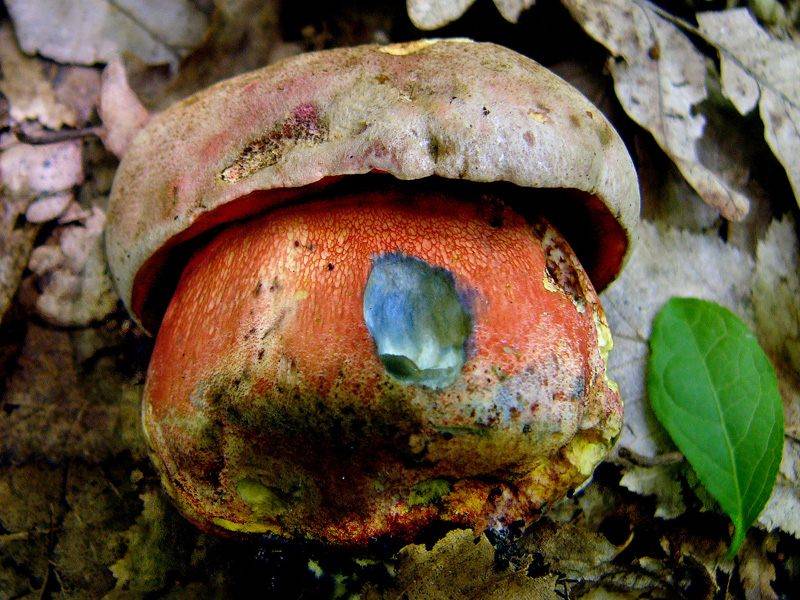
boletus Le Gal (Boletus legaliae
)
a poisonous, toxic mushroom, characterized by a smooth pinkish-orange head. There is a pronounced red mesh on the upper half of the leg. The pulp is white or light yellow, turns blue on the cut. Grows in deciduous forests of Europe;

boletus boletus
(beautiful)
(Boletus calopus
)
an inedible mushroom, with a wrinkled, dry, matte cap. The pointed leg is lemon yellow at the top, red in the middle, turning into brown. The pulp has a bitter taste, turns blue on the cut. It is found everywhere in the mixed forests of the European part of Russia;
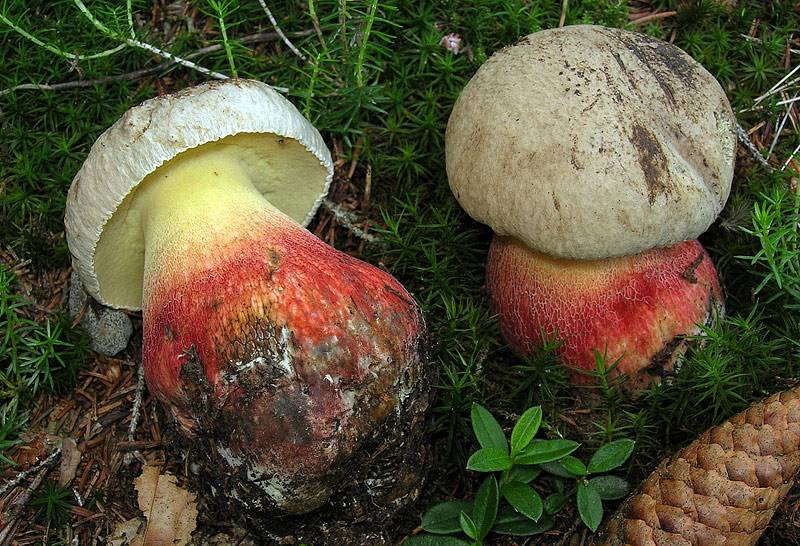
beautiful boletus (Boletus pulcherrimus
)
poisonous mushroom. The hat is hemispherical and has a reddish or olive brown color. The pulp is yellow, turns blue on the cut. The leg is reddish brown, has a dark red mesh below;


satanic mushroom (Boletus satanas
)
poisonous mushroom. The hat is hemispherical, the flesh is yellowish or white, it turns red or blue on the cut. The leg is barrel-shaped, tapering downward. The color of the leg is red-yellowish above, bright red or orange in the middle, brownish-yellow below. The satanic mushroom grows in deciduous forests.

Boletus subordinate (lat. Boletus appendiculatus
) - tubular, edible mushroom of the genus Borovik (Boletus
) families of boleths (Boletaceae
). A rare mushroom that grows from June to September, in deciduous and mixed forests.
Hat
The diameter of the cap of the Borovik subordinate is from 70 to 200 mm. At a young age, the cap of the mushroom has a semicircular shape. With age, the fungus becomes convex. The surface is velvety, matte, becomes naked with age, slightly longitudinally fibrous. The skin is practically not removed. Borovik's cap is yellow-brown, red-brown and brown-brown in color.
The tubules are dense, up to 40 mm in length. The pores are small and rounded. The color of the tubes in young mushrooms is golden yellow; with age, the mushroom becomes golden brown. When pressed, they acquire a bluish-greenish tint.
Spore powder, spores
Spores are smooth, ellipsoid-fusiform. The size of the spores is 10-15 x 4-6 microns.They are honey-yellow in color. The spore powder is olive-brown.
Leg
Leg height from 60 to 120 mm, diameter from 20 to 30 mm, cylindrical or club-shaped. The base of the stem is conically pointed, rooted in the ground. The leg of the boletus is mesh, with the age of the fungus the mesh pattern disappears. The color of the leg is closer to the cap of lemon-yellow color, to the bottom it is red-brown.
Pulp
The pulp is firm, intense yellow. At the base of the peduncle is brownish or pinkish-brown. Has a pleasant mushroom taste and aroma. Turns blue on the cut.
When and where it grows
Rare mushroom. Prefers to grow in groups of 3 to 7 pcs. The boletus is found mainly in deciduous and mixed forests from June to September. Likes to grow in regions with warm temperate climates. Forms mycorrhiza with oaks, hornbeams and beeches. Also noted in the mountains among the fir trees. Attachment to calcareous soil is noted in the literature.
Eating
Delicious edible mushroom. Suitable for all types of processing.
Scientific classification
International scientific name
Boletus appendiculatus
Schaeff. , 1763
-
Boletus radicans
var.
appendiculatus
(Schaeff.) Pers. , 1801 -
Tubiporus appendiculatus
(Schaeff.) Ricken, 1918
An excerpt characterizing the girlish Borovik
Systematics:
- Department: Basidiomycota (Basidiomycetes)
- Subdivision: Agaricomycotina
- Class: Agaricomycetes (Agaricomycetes)
- Subclass: Agaricomycetidae
- Order: Boletales
- Family: Boletaceae
- Genus: Butyriboletus (Butyribolet)
- View: Butyriboletus appendiculatus
Other names for the mushroom:
Other names:
Description:
The cap of the boletus adventitious yellow-brown, red-brown, brown-brown, at first velvety, pubescent and dull, later naked, slightly longitudinally fibrous. In young fruit bodies, it is semicircular, later convex, 7-20 cm in diameter, with a thick (up to 4 cm) crumb, the upper skin is practically not removed.
The pores are rounded, small, in young mushrooms they are golden-yellow, later golden-brown; when pressed, they acquire a bluish-greenish tint.
Spores 10-15 x 4-6 microns, ellipsoid-fusiform, smooth, honey-yellow. The spore powder is olive-brown.
The leg of the boletus boletus is mesh, lemon-yellow, red-brownish to the bottom, cylindrical or clavate, 6-12 cm long and 2-3 cm thick, moderately blue when touched. The base of the stem is conically pointed, rooted in the ground. The mesh pattern disappears by old age.
The pulp is dense, intensely yellow, brownish or pinkish-brownish at the base of the stem, bluish in the cap (mainly above the tubules), blue in the cut, with a pleasant taste and smell.
Spreading:
The mushroom is rare. It grows, as a rule, in groups, from June to September, primarily in regions with a moderately warm climate in deciduous and mixed forests, mainly under oaks, hornbeams and beeches, and is also noted in the mountains among fir trees. Attachment to calcareous soil is noted in the literature.
Similarity:
Boletus adnexa are similar to edible ones:
It can be distinguished by its light ocher cap, black-brown leg at the bottom and carbolic smell.
Grade:
Delicious edible mushroom.
Note:
The generic name Boletus is derived from the Greek bolos. a lump of clay; also bolites greek. edible mushroom.
appendiculatus, -a, -um lat. from appendicula lat. small addition, increase + -atus final element with quality value. Also appendix, -icis lat. 1) addition; 2) an appendage, a process; 3) appendix.
The boletus mushroom is one of the most common species of the Boletov family. Among the most common types of boletus are white oak mushroom (sometimes it is called net boletus), bronze boletus and girlish boletus. All these mushrooms have long been used for food, and in our times they are delicacies, since the halo of their distribution has significantly decreased.
Below you will find a photo and description of the boletus mushroom, information about the places of their growth and recommendations for the use of these mushrooms in cooking.
Areas of growth of royal boletus.
Royal boletus grows mainly in beech forests, but can also be found in other deciduous forests. In our country, this species of boletus is common in the Caucasus and the Far East. These mushrooms love calcareous and sandy soils. Royal mushrooms are harvested from June to September.

Evaluation of the nutritional qualities of boletus boletus.
This is a good edible mushroom. Its pulp is solid, dense and fragrant, it is very highly valued. Royal boletus is used for food freshly prepared and canned. It is not for nothing that Boletus is called “the king-mushroom”, it is a very nutritious mushroom with excellent taste and mouth-watering smell. It is highly appreciated by culinary experts.

The calorie content of boletus is low, since they are 90% water. This low-calorie food is good for dieters. There are 34 kcal per 100 grams of mushrooms. Interestingly, dried boletus has more calories - they contain 286 kcal.

Royal boletus contains saturated and unsaturated fatty acids, monosaccharides, disaccharides, carbohydrates, fats, proteins and dietary fiber. In addition, they are rich in macro-, microelements and vitamins, for example, PP, E, C, B vitamins, sulfur, chlorine, phosphorus, potassium, magnesium, chromium, sodium, calcium, cobalt, rubidium, silicon, fluorine, zinc, iron, manganese.
Similar species.
Outwardly, the royal boletus is similar to its relative, the beautiful boletus. You can distinguish a beautiful boletus by the tap leg and the blue pulp.

Boletus royal
Boletus royal - Boletus regius
In another way, it is called the Royal Boletus or Royal Boletus.
External signs
Mushroom cap
The mushroom stands out sharply from the rest of the boletus with its expressive hat, which has a reddish - pink, violet - red or bright pink color and a marble - speckled pattern. In mature mushrooms, the color of the hat is paler.
The surface of the hats is usually smooth or with light mesh cracks, the diameter reaches 6-15 cm.
Bolette royal is born with a convex hat, which later becomes like a pillow. The caps of some boletus mushrooms open completely and form a depression in the middle.
The flesh is yellow and bluish when cut.
The bottom is formed by a free tubular mass of tubes reaching a length of 25 mm, with a deep fossa at the stem. It has a yellowish or greenish color.
Ripening of the fungus is accompanied by the appearance of elongated smooth spores of a brownish-olive color.
Stipe
Boletus royal builds up a leg about 6 cm thick and 15 cm high, with a thickening at the base.
The legs are painted brown - yellow, the top is decorated with a thin yellowish mesh.
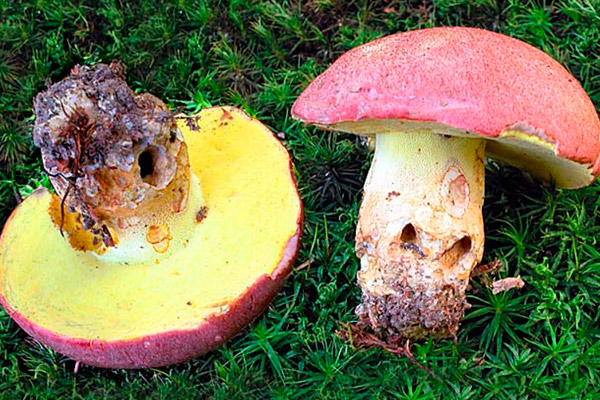
Growing places
The royal white mushroom prefers deciduous forest, mainly consisting of beech, grows well on limestone and sandstone. Borovik is widespread in the Caucasian territory, and occasionally appears in the Far East.
Boletus fruiting occurs in June - September.
Similar species
In appearance, this mushroom is similar to the beautiful Borovik, only that the leg is not yellow, but red, and the flesh turns blue faster and more intensely.
Edibility
The dense pulp of this royal mushroom is not only beautiful, but also pleasant to the taste (Royal Borovik tastes similar to Rooted Borovik), and has a characteristic mushroom aroma. The mushroom is good in boiled, stewed and fried form, great for drying, salting and pickling.
Its pulp contains natural antibiotics and biologically active substances, vitamins C, D, A and B1. It is considered a delicious mushroom.



